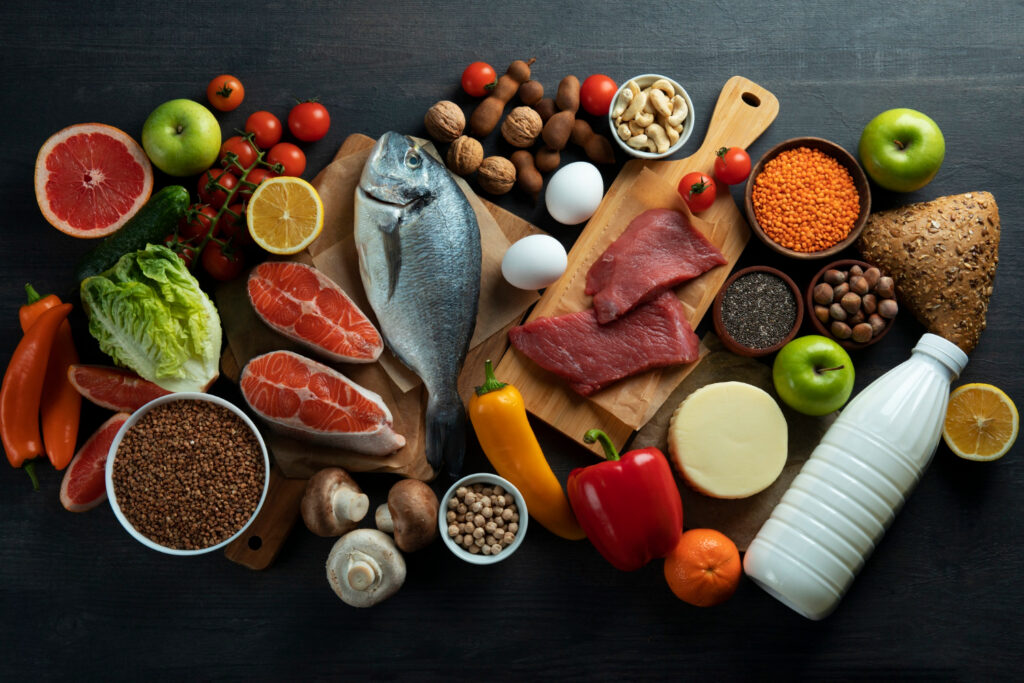
Discover the best foods and nutrients to speed up healing after ankle or foot injuries or surgery. Learn how a recovery-focused diet can reduce inflammation, support bone healing, and prevent complications naturally.
Whether you’re recovering from a sprain, fracture, tendon tear, or surgical procedures like bunion correction or ankle reconstruction, your body enters a critical healing phase. During this time, your body focuses on:
- Reducing inflammation
- Repairing soft tissue
- Healing broken bones
- Preventing infection
- Supporting immune function
A nutrient-rich, balanced diet plays a powerful role in speeding up recovery, minimizing complications, and getting you back on your feet faster.
🥦 Why Nutrition Is Essential for Injury Recovery
Most people associate recovery with physical therapy and rest. While those are essential, your diet can significantly impact how fast and how well your body heals. The right foods not only fuel tissue regeneration but also:
- Shorten recovery time
- Reduce post-operative swelling
- Maintain energy and mood
- Preserve muscle mass during immobilization
Think of food as medicine: the right fuel gives your body the tools it needs to repair damaged ligaments, tendons, bones, and skin.
💪 Evidence-Based Nutritional Strategies for Recovery
Research shows that optimal recovery from musculoskeletal injuries and orthopedic surgery is supported by:
- Balanced energy intake (to prevent muscle loss and low energy availability)
- High-protein and complex-carb diets
- Supplementation with nutrients like collagen, omega-3s, creatine, and vitamin D
Studies also recommend:
- Distributing protein intake evenly throughout the day
- Matching caloric intake to recovery needs
- Managing appetite changes during rehabilitation
- Incorporating nutritional counseling into physical therapy routines
Registered dietitians, athletic trainers, and healthcare professionals should work together to develop custom nutrition plans during the rehabilitation process.
🍽️ Best Foods & Nutrients for Ankle and Foot Injury Recovery
Healing Foods After Foot and Ankle Injuries
The table below outlines key nutrients and food sources that support healing after foot and ankle injuries or surgery:
| Nutrient / Food Type | Role in Recovery | Best Food Sources |
| Protein | Repairs muscles, ligaments, tendons, and skin | Chicken, turkey, fish, lean meat, eggs, tofu, legumes, Greek yogurt |
| Omega-3 Fatty Acids | Reduces inflammation, supports healing | Salmon, sardines, mackerel, flaxseeds, chia seeds, walnuts, olive oil |
| Vitamin C | Supports collagen production, aids tissue repair | Citrus fruits, bell peppers, strawberries, kiwi, broccoli |
| Calcium & Vitamin D | Strengthens bones, essential for healing fractures | Dairy products, fortified plant milks, leafy greens, eggs, fatty fish, sunlight |
| Zinc & Trace Minerals | Promotes tissue repair and immune function | Meat, shellfish, legumes, nuts, seeds, whole grains |
| Antioxidants & Phytonutrients | Fights oxidative stress, reduces excessive inflammation | Berries, turmeric, ginger, garlic, leafy greens, colorful vegetables |
| Complex Carbohydrates | Provides energy for rehab and supports muscle preservation | Brown rice, oats, quinoa, sweet potatoes, whole-grain bread and pasta |
| Hydration | Aids circulation, reduces swelling, delivers nutrients to injury site | Water, herbal teas, broths, water-rich fruits and vegetables (cucumber, melon) |
🧃 Supplements to Consider (With Caution)
While food should be your first line of support, some dietary supplements may enhance recovery:
- Collagen + Vitamin C – Promotes ligament and tendon repair
- Creatine Monohydrate – Supports muscle strength during immobilization
- Omega-3 Fish Oil – Anti-inflammatory effects
- Vitamin D3 – Especially if recovering indoors or with low sun exposure
⚠️ Always consult with a healthcare provider before starting new supplements—especially post-surgery.
🧠 Pro Tips: Timing and Meal Planning for Recovery
- Distribute protein intake across all meals (don’t save it all for dinner!)
- Eat before physical therapy to fuel muscle activation
- Don’t skip meals—even if you’re less active, your body still needs calories to repair tissue
- Stay consistent with hydration throughout the day
👩⚕️ Final Thoughts: Nutrition Is a Cornerstone of Recovery
Proper nutrition after a foot or ankle injury isn’t just a bonus — it’s a necessity. Whether you’re dealing with a sprain, fracture, or post-surgical healing, prioritizing nutrient-dense foods can:
- Speed up recovery
- Reduce the risk of complications
- Improve strength and mobility outcomes
Healthcare providers, trainers, and physical therapists should incorporate basic nutrition education into rehabilitation plans. When in doubt, consult a registered dietitian to personalize your recovery nutrition strategy.
📚 References
- Giraldo-Vallejo, J.E. et al. (2023). Nutritional Strategies in the Rehabilitation of Musculoskeletal Injuries in Athletes: A Systematic Integrative Review.
Smith-Ryan, A.E., et al. (2020). Nutritional Considerations and Strategies to Facilitate Injury Recovery and Rehabilitation. Journal of Athletic Training, 55(9), 918–930.
Sanduni Abeysinghe
BSc, MSc, PGDE
Registered Nutritionist

